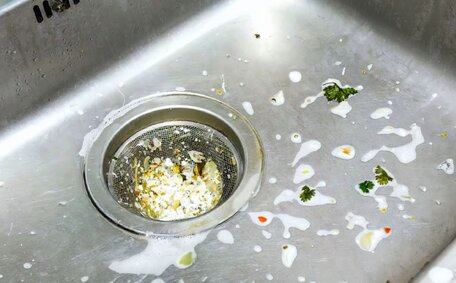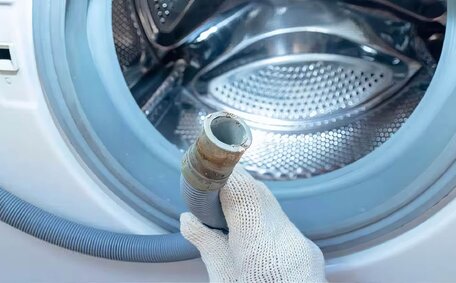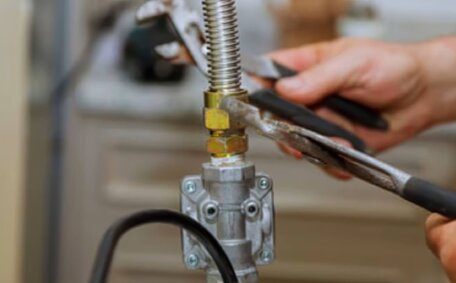Introduction: Understanding Hot Water System Insulation
Properly insulating your hot water system is key to efficiency and cost-effectiveness.
Insulating your hot water tank and pipes prevents valuable heat from escaping, allowing you to conserve more energy and save on electricity bills. Well-insulated systems also keep water at higher temperatures for longer periods - meaning less time waiting for the shower to heat up!
In this article, we’ll break down the benefits of insulating your hot water system and provide actionable tips for DIY pipe lagging and tank wraps.
We’ll also explore professional insulation services if you want to leave it to the experts. By better understanding insulation, you can take control of your energy use and expenses.
The Importance of Insulating Hot Water Systems
To insulate your hot water system is crucial here in Australia due to our climate extremes. Without proper insulation, precious heat is easily lost from pipes and tanks, forcing your system to continually re-heat water. This results in spiking energy bills and higher greenhouse gas emissions from power stations.
Maintaining heat is key to keep water temperatures steady, ensuring a hot water flow while reducing costs and consumption. As Blacktown Plumbing often advises clients, adding insulation allows you to conserve more energy, spend less on bills, and decrease your carbon footprint.
Other benefits include:
- Keeps water hotter for longer. Less waiting time for heated water.
- Prevents water wastage from going down the drain while waiting.
- Extends system lifespan by reducing wear on heating elements.
- Easy DIY installation options for pipes/tanks.
Benefits of Insulation for Hot Water Systems
Installing insulation around your hot water system provides several key benefits, including:
- Enhanced energy efficiency - Insulation minimises precious heat loss from pipes and tanks. This allows your system to conserve more energy rather than continually re-heating water.
- Lower electricity bills - By saving energy, insulation directly translates to lower running costs and electricity expenses over time.
- Water conservation - Well-insulated systems maintain water at higher temperatures for longer periods. You waste less water waiting for hot water to flow.
- Improved water temperature - Adding insulation raises water temperature by 2°F to 4°F on average.
Insulation extends the working life of water heater tanks and heating elements by reducing strain and wear. It also lowers associated greenhouse gas emissions from power stations when less energy is required overall.
Environmental and Economic Benefits
Installing insulation brings notable environmental benefits by reducing energy consumption from non-renewable sources. As less power is needed to heat water, lower carbon dioxide and greenhouse gas emissions result from power stations.
Sustaining natural resources is also a flow-on effect. And with Sydney households spending over $2000 yearly on hot water heating, insulating measures keep water heating costs down, delivering economic benefits through sustained cost savings.
DIY insulation typically costs $100-$350 for materials. With reduced power bills, this investment pays for itself within 1-2 years. Ongoing savings then continue for the lifespan of your system.
For the average Blacktown home, adding insulation saves around $300 per year on hot water costs. Across Greater Sydney, this equates to $100m in yearly savings - illustrating the cumulative impact on household expenses and emissions reductions.
Energy and Cost Savings
Adding insulation can lead to considerable energy and cost savings for any home or business with a hot water system. According to Energy Efficiency Australia, the average home loses a staggering 75% of heat from an uninsulated electric storage hot water system.
By preventing this wasted heat dissipation, insulation allows tanks and pipes to conserve energy equivalent to around 600 kWh annually. At 28c per kWh in NSW, this translates into $168 in yearly savings.
Natural gas systems also lose up to 40% of heat without insulation. Preventing this equates to savings of around $83 per year based on the average NSW gas tariff.
The message is clear – insulation equals fewer energy losses and bigger cost savings over time. And with electricity prices only set to rise further, the financial benefits will compound year after year.
How Insulation Works in Hot Water Systems
Insulation works by creating a barrier around hot water pipes and tanks to trap heat energy inside. Materials like fibreglass, foam, or lagging act as thermal resistors - they resist or ‘slow down’ heat flow.
As hot water travels through pipes from your water heater, insulation minimises surface heat loss along the way. Tank insulation also helps to keep water hotter for extended periods.
Applied snugly around the exterior, insulation leaves an air gap that prevents convection currents. With less heat dissipating outwards, energy is retained within the system instead of being constantly wasted re-heating cooler water.
Understanding Heat Loss in Hot Water Systems
Heat loss refers to the unwanted transfer of heat from hot water tanks and pipes into cooler surroundings, failing to keep water warmth consistent. This wasted energy forces your system to continually reheat water to maintain temperature.
Heat dissipates easily from heated metal surfaces. So tanks and pipes without insulation lose warmth to ambient air, the ground, or cold water flowing in.
Key areas vulnerable to heat loss are:
- Pipes - especially the first 3 feet from your hot water heater. Insulating this section is very effective.
- Joints/valves - where pipes connect as heat escapes through small gaps.
- Water heater exterior - the large tank surface area readily loses heat.
Determining where heat loss occurs allows you to target insulation efforts for the best energy savings outcomes.
Insulating Materials for Hot Water Tanks and Pipes
When it comes to insulating hot water systems, you have various material options depending on whether you’re insulating pipes or the tank itself.
For pipe insulation, common choices include:
- Pipe lagging - Pre-slit foam or rubber tubing that wraps directly around pipes.
- Removable foam pipe sleeves - Velcro-fastened sleeves allowing access to pipes.
- Fibreglass wraps - Effective but require protective foil covering.
Tank insulation typically uses a jacket or blanket made of fibreglass or foam. You wrap this insulation tightly around the tank exterior underneath its outer casing.
Seeking durable, quality materials helps maximise energy savings over time. Reputable brands of pipe lagging and tank wraps certified to Australian Standards ensure optimal performance.
For DIY, insulate your indoor pipework with closed-cell pipe foam and outdoor pipework with UV-resistant rubber foam. Professional installers also have access to aerogel insulation technology offering extremely high performance.
Choosing the Right Insulation Material
Selecting suitable insulation materials for hot water systems depends on several key factors:
- Effectiveness (R-value) – A material’s resistance to heat flow. Higher R-values give greater insulation performance.
- Application – Tank wraps, pipe lagging, or removable sleeves. Each serves differing needs.
- Cost – Balance performance against product expense and payback period via energy savings.
- Durability – Longer-lasting materials continue providing benefits over time.
Weighing up these aspects ensures the insulation you choose delivers optimal value while addressing your specific requirements. Our experts can provide tailored advice about the best insulation solutions for your home or business.
Understanding R-Value
R-value refers to a material’s ability to resist heat flow. It indicates the effectiveness of insulation materials - the higher the R-value, the better the performance.
R-values are measured numerically in units. Typical hot water pipe insulation has an R-value between 1 – 4. Tank insulation R-values usually range from R11 to R25+.
Higher R-values strongly resist heat transfer and energy loss. So when selecting insulation, choose materials with suitable R-values for their intended use.
Tank wraps need an R-value of R12 or above to properly trap heat. And using pipe lagging with an R-value of 3+ ensures good heat retention along pipe runs.
Referencing R-values lets you compare insulation materials and pick those offering adequate thermal performance.
Installation: Step-by-Step Guide to Insulating Hot Water Systems
To insulate your hot water system is a straightforward DIY project that helps conserve energy. Follow these key steps:
- Switch off the power and water supply, and let the system cool completely.
- Clean pipes/tanks thoroughly removing dirt or oil so insulation adheres properly.
- Measure your pipes and tank to calculate required insulation quantities.
- Cut pipe insulation to size as needed and wrap snugly with 50% overlap.
- Secure with tape or clamps, taking care not to compress the insulation.
- For tanks, wrap insulation blankets evenly and tighten straps.
- Label insulated pipes using colour codes for hot and cold.
- Restore system power/water once insulation installed.
Safety is paramount when working around hot water units. Use protective equipment and exercise caution.
Alternatively, consult our professional plumbers to tackle insulation installation at your property.
Insulating Hot Water Tanks
To insulate your hot water storage tank is crucial to prevent wasted heat loss. Follow these key steps:
- Switch off power and water to the tank, allowing it to fully cool.
- Clean tank exterior thoroughly to allow insulation adhesion.
- Measure tank height and circumference to calculate required insulation.
- Cut tank insulation blankets to suit or wrap whole rolls around.
- Wrap insulation tightly around tank, securing with straps.
- Insulate connecting pipes, joints and valves also.
- Restore system power and water once insulation complete.
Materials needed include:
- Fibreglass or foam tank insulation blanket
- Measuring tape
- Sharp scissors or snips
- Straps to secure insulation
- Pipe insulation as required
With the large surface area, water heater tanks can lose ample heat without insulation. Properly installing quality tank insulation traps heat to ensure maximum energy efficiency.
Insulating Pipes
Insulating hot and cold water pipes is equally important to optimise energy efficiency and prevent issues like condensation.
- Clean pipe surfaces so insulation adheres properly.
- Measure and cut pipe insulation to suit the pipe diameter.
- Wrap insulation around pipes with a 50% overlap.
- Secure the insulation using tape or clamps as required.
- Use colour codes to identify insulated hot and cold pipes.
Cold water pipes should be insulated to avoid surface condensation which can cause leaks or corrosion over time.
Insulating hot water pipes minimises heat loss along their length to conserve energy. Focus especially on the first 3 feet of hot pipe from the water heater.
Properly insulating all water pipework assists efficiency and prevents issues arising from uncontrolled heat or moisture.
Safety Considerations When Insulating Hot Water Systems
When installing insulation around hot water systems, safety should always be your top priority.
As heat and electricity are involved, take precautions to minimise risks:
- Switch off the power and water supply, allowing the system to fully cool before insulating.
- Never obstruct safety valves or controls - ensure these remain easily accessible.
- Keep insulation well clear of flues, burners and ignition sources.
- Use non-flammable insulation materials rated for hot water use.
- Wear protective gloves and eye equipment when handling fibreglass insulation.
- Exercise great care using scissors or cutters around live power or gas pipes.
- Replace the water heater outer casing after insulating its tank.
If unsure about safely installing insulation, consult a licenced professional for guidance or to complete the work.
While insulation brings many benefits, ensuring you insulate safely by following key precautions is an absolute must.
Professional Installation vs. DIY: What to Consider
When opting to insulate your hot water system, you have the choice between DIY or employing professional installers. So which is better for your situation?
DIY insulation can work well for accessible pipes and small tanks. With some handy skills and proper safety precautions, pipe lagging and basic tank wraps are achievable weekend projects.
However, calling qualified professionals like Blacktown Plumbing has definite advantages. Our team brings extensive hot water expertise from years of experience. We undertake all necessary training and hold current plumbing licences to safely handle electrical and gas systems.
For tricky installations around complex pipework or large tanks, our technical skills and specialty equipment ensure optimal performance. And with professional product knowledge, we prescribe the best insulation solutions using high quality materials that comply to Australian Standards.
Get in touch with our friendly team on 1300 349 338 to discuss insulating your residential or commercial hot water system. We remove hassles and hazards - providing reliable, efficient service including clean-up and warranty on all labour and materials used.
Maintenance and Longevity of Insulation for Hot Water Systems
To maximise long-term effectiveness, ensure you regularly insulate your hot water system with simple maintenance. Check insulation periodically for any damage, gaps or deterioration that allow heat loss. Typical signs include:
- Cracks, fraying, mould or compression damage to insulation blankets or lagging.
- Loose, displaced or sagging insulation that’s no longer snug-fitting.
- Noticeable reductions in hot water temperature signalling insulation issues.
Conduct visual inspections around your hot water unit every 6-12 months. Repair any damaged insulation or re-wrap lagging that’s become loose over time. Topping up older insulation can also help improve heat retention.
Quality insulation materials certified to Australian Standards offer optimal durability. But regardless of product quality, periodic maintenance checks help keep insulation performing at its peak.
Complementary Energy-Saving Practices for Hot Water Systems
Beyond insulation, several other methods exist to optimise your hot water system’s efficiency and reduce expenses.
Adjusting the thermostat is a simple solution. Lowering the temperature setting by 10-15°F saves energy while still delivering sufficiently hot water for most needs.
Strategically positioning your water heater in a warmer spot instead of cold garages or basements prevents extra heat losses. Installing heat traps on the hot water outlet and cold inlet connections helps keep water temperatures elevated.
Replacing old inefficient models with modern energy-saving systems can also dramatically cut electricity usage and bills. New heat pump or solar hot water heaters offer the highest efficiency.
At Blacktown Plumbing, we stay across all the latest ways to save energy on hot water. Our experienced team advises the best efficiency solutions matched to your household or business needs while meeting plumbing regulations.
Get in touch on 1300 349 338 regarding a hot water system inspection or upgrade. We help future-proof your home or business while maximising savings.






